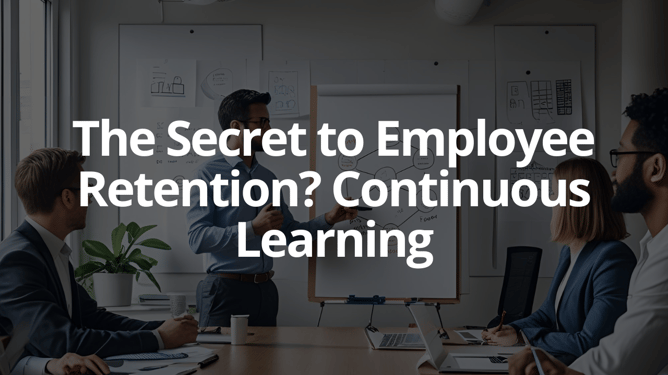How to Embed Learning and Maximise ROI in Your Organisation

How to Embed Learning and Maximise ROI in Your Organisation
When designing a learning experience, how much importance do you place on embedding the knowledge after the session?
After all, if you’re not ensuring participants have everything they need to implement this new knowledge in their day-to-day lives, then what’s the purpose of the training?
As organisations aim to attract and retain high-quality talent, learning and development — alongside a clear career pathway — has become a crucial part of most employer brands. It’s no surprise, then, that when businesses invest in knowledge, whether formal or informal, stakeholders want to understand the return on investment (ROI).
This focus on ROI becomes even more critical when you consider the Forgetting Curve. In short, it shows how rapidly memory retention declines over time without reinforcement.
Astonishingly, we forget up to 50% of the information presented to us within just one hour. This increases to 70% after 24 hours, and after one week, some individuals retain only 10% of the information.
To maximise ROI from any learning and development programme, it is vital that training be actively embedded into an individual’s everyday work.
In this article, I’ll share several practical strategies you can use to ensure you and your team retain as much knowledge as possible and apply new skills for the highest impact.
1. Recruit Managers Who Are Passionate About Learning
Robert O. Brinkerhoff developed the 40/20/40 Model, which suggests that the outcome and ROI of training are heavily influenced by what happens before and after the training session — not just the session itself. In fact, 40% of the outcome is determined by what happens before, and another 40% by what happens after.
Managers who are passionate about learning ensure participants are well-prepared even before stepping into the training room. These managers also create opportunities for team members to apply their new knowledge and skills on the job after the event — whether it's a one-day workshop or the start of a year-long leadership programme.
2. Identify the True Learning Needs
It’s easy to assume you know what an individual or a team's learning and development needs are. However, it’s wise to discuss these needs with the individual and gather insights from team members and fellow managers.
For example, a manager might appear to need coaching skills, especially if they are often busy telling team members what to do. Yet, upon further exploration, you may find that the manager understands coaching well but has a natural communication style that leads them to revert to “telling” in spontaneous situations.
In this case, the real issue isn’t coaching ability but communication style. Addressing this need will have a more significant impact than focusing on the perceived symptom of poor coaching.
3. Get Stakeholder Buy-In Before, Not After
In our haste to get things done, it’s tempting to cut corners. However, investing time upfront to help individuals understand the impact of learning and training versus not doing the training is crucial.
Encourage them to consider the effect on themselves, their colleagues, peers, and ultimately, clients and the business. Stakeholder buy-in before training helps secure long-term engagement with the learning process.
4. Tailor the Learning to Specific Roles and the Workplace
Avoid a one-size-fits-all approach for economic reasons. To fully embed learning, tailor the training to specific roles and teams.
While it’s possible to identify roles with similar skill requirements, it’s essential to include practical examples from each role so participants can easily see how they will apply their new skills in their specific context.
5. Create Opportunities for Participants to Use Their New Skills
Managers are often so busy that they don’t take the time to plan how team members will use their new skills. It’s essential to delegate tasks, create opportunities for involvement in projects, or allow someone to lead a project.
If you’re not planning ahead and discussing how team members will use what they’ve learned, the impact of the training will quickly fade. Remember, if you don’t use it, you lose it.
6. Create Forums for Participants to Collaborate After Events
As well as supporting team members in embedding what they’ve learned, encourage collaboration with fellow participants. They can buddy up, check in on each other’s progress, and hold one another accountable.
Online forums are also great for keeping remote workers connected. Where feasible, encourage regular meet-ups where participants can discuss challenges and seek support.
You might think, "This all sounds great, but I don’t have the time." However, consider the time it takes to manage people and situations when things go wrong. Much of this could be avoided if learning and training were embedded more thoroughly.
I would love to hear your ideas on how you embed learning in your organisation — this list certainly isn’t exhaustive.
Until next time,
Nic Hallett

P.S. If you would like to discuss any of your other learning & development challenges, book in your discovery call.
About Excel Communications
Excel Communications is a learning and development consultancy based near London in the U.K. For more than 30 years; we have been collaborating with clients across the globe.
Partnering with Excel empowers you to evolve your people and business by fuelling a love for learning.
We work with you to create unforgettably, customised learning experiences to achieve your vision of success and growth, with tangible results.
View our case studies here.




